Faseeh Ahmad
A Unified Framework for Real-Time Failure Handling in Robotics Using Vision-Language Models, Reactive Planner and Behavior Trees
Mar 21, 2025Abstract:Robotic systems often face execution failures due to unexpected obstacles, sensor errors, or environmental changes. Traditional failure recovery methods rely on predefined strategies or human intervention, making them less adaptable. This paper presents a unified failure recovery framework that combines Vision-Language Models (VLMs), a reactive planner, and Behavior Trees (BTs) to enable real-time failure handling. Our approach includes pre-execution verification, which checks for potential failures before execution, and reactive failure handling, which detects and corrects failures during execution by verifying existing BT conditions, adding missing preconditions and, when necessary, generating new skills. The framework uses a scene graph for structured environmental perception and an execution history for continuous monitoring, enabling context-aware and adaptive failure handling. We evaluate our framework through real-world experiments with an ABB YuMi robot on tasks like peg insertion, object sorting, and drawer placement, as well as in AI2-THOR simulator. Compared to using pre-execution and reactive methods separately, our approach achieves higher task success rates and greater adaptability. Ablation studies highlight the importance of VLM-based reasoning, structured scene representation, and execution history tracking for effective failure recovery in robotics.
Addressing Failures in Robotics using Vision-Based Language Models (VLMs) and Behavior Trees (BT)
Nov 03, 2024Abstract:In this paper, we propose an approach that combines Vision Language Models (VLMs) and Behavior Trees (BTs) to address failures in robotics. Current robotic systems can handle known failures with pre-existing recovery strategies, but they are often ill-equipped to manage unknown failures or anomalies. We introduce VLMs as a monitoring tool to detect and identify failures during task execution. Additionally, VLMs generate missing conditions or skill templates that are then incorporated into the BT, ensuring the system can autonomously address similar failures in future tasks. We validate our approach through simulations in several failure scenarios.
Adaptable Recovery Behaviors in Robotics: A Behavior Trees and Motion Generators(BTMG) Approach for Failure Management
Apr 09, 2024Abstract:In dynamic operational environments, particularly in collaborative robotics, the inevitability of failures necessitates robust and adaptable recovery strategies. Traditional automated recovery strategies, while effective for predefined scenarios, often lack the flexibility required for on-the-fly task management and adaptation to expected failures. Addressing this gap, we propose a novel approach that models recovery behaviors as adaptable robotic skills, leveraging the Behavior Trees and Motion Generators~(BTMG) framework for policy representation. This approach distinguishes itself by employing reinforcement learning~(RL) to dynamically refine recovery behavior parameters, enabling a tailored response to a wide array of failure scenarios with minimal human intervention. We assess our methodology through a series of progressively challenging scenarios within a peg-in-a-hole task, demonstrating the approach's effectiveness in enhancing operational efficiency and task success rates in collaborative robotics settings. We validate our approach using a dual-arm KUKA robot.
Flexible and Adaptive Manufacturing by Complementing Knowledge Representation, Reasoning and Planning with Reinforcement Learning
Nov 15, 2023Abstract:This paper describes a novel approach to adaptive manufacturing in the context of small batch production and customization. It focuses on integrating task-level planning and reasoning with reinforcement learning (RL) in the SkiROS2 skill-based robot control platform. This integration enhances the efficiency and adaptability of robotic systems in manufacturing, enabling them to adjust to task variations and learn from interaction data. The paper highlights the architecture of SkiROS2, particularly its world model, skill libraries, and task management. It demonstrates how combining RL with robotic manipulators can learn and improve the execution of industrial tasks. It advocates a multi-objective learning model that eases the learning problem design. The approach can incorporate user priors or previous experiences to accelerate learning and increase safety. Spotlight video: https://youtu.be/H5PmZl2rRbs?si=8wmZ-gbwuSJRxe3S&t=1422 SkiROS2 code: https://github.com/RVMI/skiros2 SkiROS2 talk at ROSCon: https://vimeo.com/879001825/2a0e9d5412 SkiREIL code: https://github.com/matthias-mayr/SkiREIL
Using Knowledge Representation and Task Planning for Robot-agnostic Skills on the Example of Contact-Rich Wiping Tasks
Aug 27, 2023Abstract:The transition to agile manufacturing, Industry 4.0, and high-mix-low-volume tasks require robot programming solutions that are flexible. However, most deployed robot solutions are still statically programmed and use stiff position control, which limit their usefulness. In this paper, we show how a single robot skill that utilizes knowledge representation, task planning, and automatic selection of skill implementations based on the input parameters can be executed in different contexts. We demonstrate how the skill-based control platform enables this with contact-rich wiping tasks on different robot systems. To achieve that in this case study, our approach needs to address different kinematics, gripper types, vendors, and fundamentally different control interfaces. We conducted the experiments with a mobile platform that has a Universal Robots UR5e 6 degree-of-freedom robot arm with position control and a 7 degree-of-freedom KUKA iiwa with torque control.
Learning to Adapt the Parameters of Behavior Trees and Motion Generators to Task Variations
Mar 14, 2023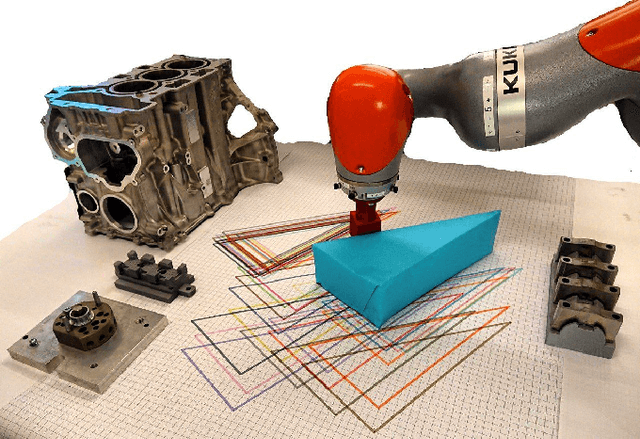
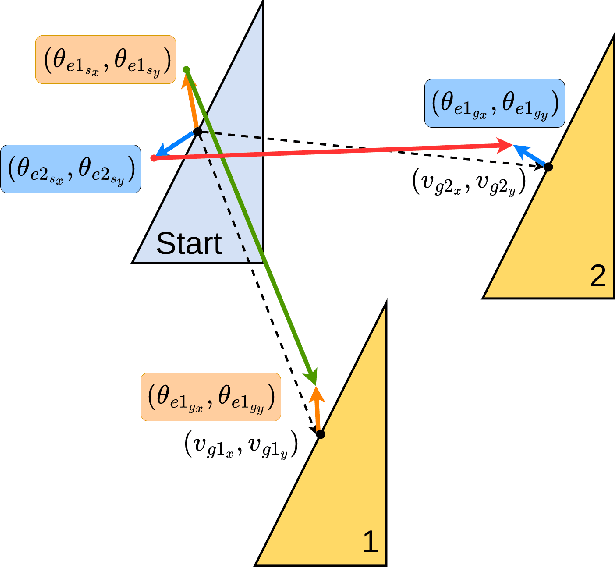
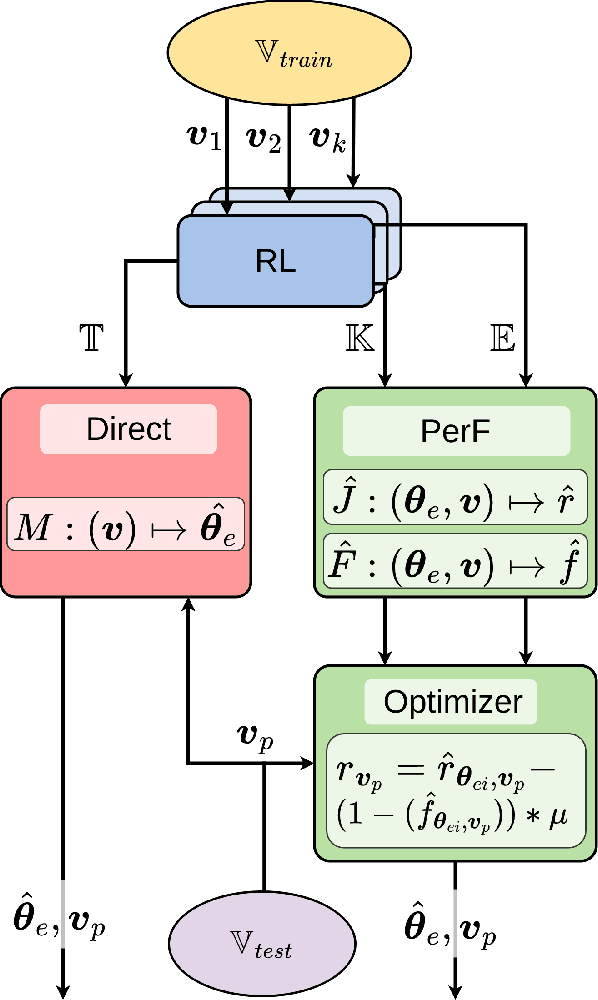
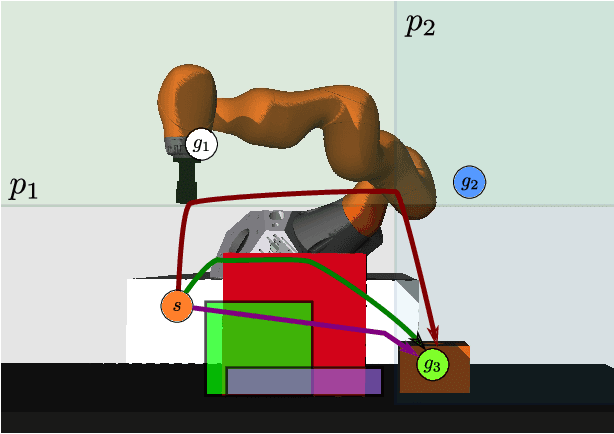
Abstract:The ability to learn new tasks and quickly adapt to different variations or dimensions is an important attribute in agile robotics. In our previous work, we have explored Behavior Trees and Motion Generators (BTMGs) as a robot arm policy representation to facilitate the learning and execution of assembly tasks. The current implementation of the BTMGs for a specific task may not be robust to the changes in the environment and may not generalize well to different variations of tasks. We propose to extend the BTMG policy representation with a module that predicts BTMG parameters for a new task variation. To achieve this, we propose a model that combines a Gaussian process and a weighted support vector machine classifier. This model predicts the performance measure and the feasibility of the predicted policy with BTMG parameters and task variations as inputs. Using the outputs of the model, we then construct a surrogate reward function that is utilized within an optimizer to maximize the performance of a task over BTMG parameters for a fixed task variation. To demonstrate the effectiveness of our proposed approach, we conducted experimental evaluations on push and obstacle avoidance tasks in simulation and with a real KUKA iiwa robot. Furthermore, we compared the performance of our approach with four baseline methods.
Combining Planning, Reasoning and Reinforcement Learning to solve Industrial Robot Tasks
Dec 07, 2022Abstract:One of today's goals for industrial robot systems is to allow fast and easy provisioning for new tasks. Skill-based systems that use planning and knowledge representation have long been one possible answer to this. However, especially with contact-rich robot tasks that need careful parameter settings, such reasoning techniques can fall short if the required knowledge not adequately modeled. We show an approach that provides a combination of task-level planning and reasoning with targeted learning of skill parameters for a task at hand. Starting from a task goal formulated in PDDL, the learnable parameters in the plan are identified and an operator can choose reward functions and parameters for the learning process. A tight integration with a knowledge framework allows to form a prior for learning and the usage of multi-objective Bayesian optimization eases to balance aspects such as safety and task performance that can often affect each other. We demonstrate the efficacy and versatility of our approach by learning skill parameters for two different contact-rich tasks and show their successful execution on a real 7-DOF KUKA-iiwa.
Skill-based Multi-objective Reinforcement Learning of Industrial Robot Tasks with Planning and Knowledge Integration
Mar 18, 2022

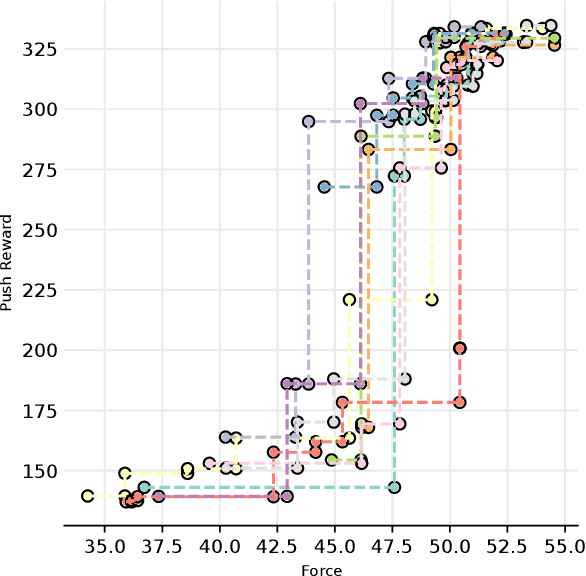
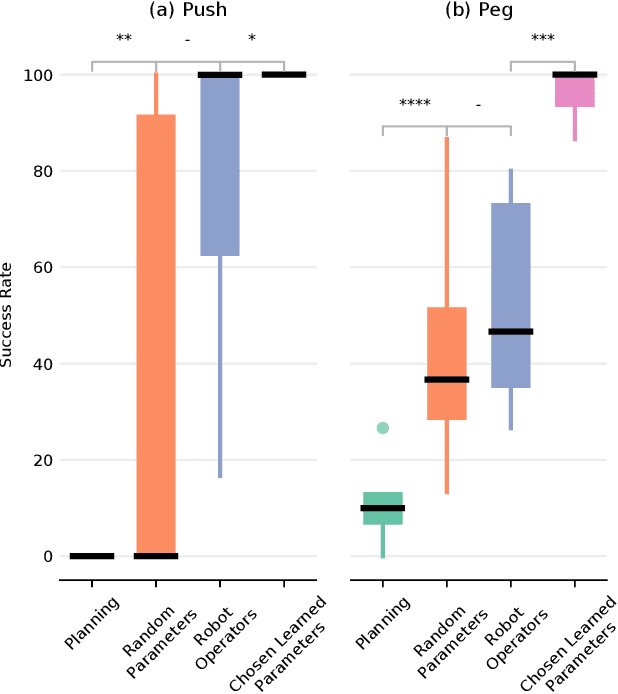
Abstract:In modern industrial settings with small batch sizes it should be easy to set up a robot system for a new task. Strategies exist, e.g. the use of skills, but when it comes to handling forces and torques, these systems often fall short. We introduce an approach that provides a combination of task-level planning with targeted learning of scenario-specific parameters for skill-based systems. We propose the following pipeline: (1) the user provides a task goal in the planning language PDDL, (2) a plan (i.e., a sequence of skills) is generated and the learnable parameters of the skills are automatically identified. An operator then chooses (3) reward functions and hyperparameters for the learning process. Two aspects of our methodology are critical: (a) learning is tightly integrated with a knowledge framework to support symbolic planning and to provide priors for learning, (b) using multi-objective optimization. This can help to balance key performance indicators (KPIs) such as safety and task performance since they can often affect each other. We adopt a multi-objective Bayesian optimization approach and learn entirely in simulation. We demonstrate the efficacy and versatility of our approach by learning skill parameters for two different contact-rich tasks. We show their successful execution on a real 7-DOF KUKA-iiwa manipulator and outperform the manual parameterization by human robot operators.
Learning of Parameters in Behavior Trees for Movement Skills
Sep 27, 2021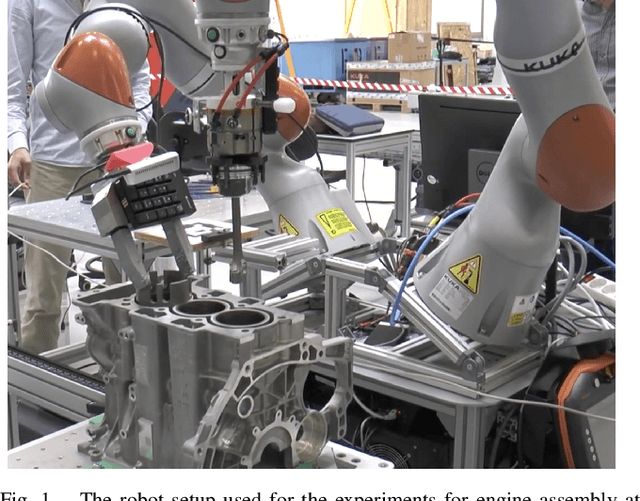

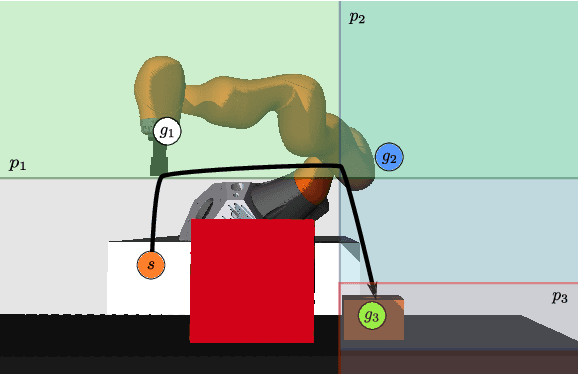
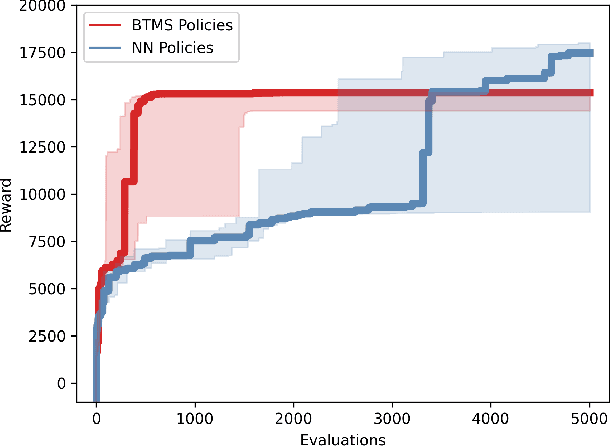
Abstract:Reinforcement Learning (RL) is a powerful mathematical framework that allows robots to learn complex skills by trial-and-error. Despite numerous successes in many applications, RL algorithms still require thousands of trials to converge to high-performing policies, can produce dangerous behaviors while learning, and the optimized policies (usually modeled as neural networks) give almost zero explanation when they fail to perform the task. For these reasons, the adoption of RL in industrial settings is not common. Behavior Trees (BTs), on the other hand, can provide a policy representation that a) supports modular and composable skills, b) allows for easy interpretation of the robot actions, and c) provides an advantageous low-dimensional parameter space. In this paper, we present a novel algorithm that can learn the parameters of a BT policy in simulation and then generalize to the physical robot without any additional training. We leverage a physical simulator with a digital twin of our workstation, and optimize the relevant parameters with a black-box optimizer. We showcase the efficacy of our method with a 7-DOF KUKA-iiwa manipulator in a task that includes obstacle avoidance and a contact-rich insertion (peg-in-hole), in which our method outperforms the baselines.
A Formal Framework for Robot Construction Problems: A Hybrid Planning Approach
Mar 17, 2019



Abstract:We study robot construction problems where multiple autonomous robots rearrange stacks of prefabricated blocks to build stable structures. These problems are challenging due to ramifications of actions, true concurrency, and requirements of supportedness of blocks by other blocks and stability of the structure at all times. We propose a formal hybrid planning framework to solve a wide range of robot construction problems, based on Answer Set Programming. This framework not only decides for a stable final configuration of the structure, but also computes the order of manipulation tasks for multiple autonomous robots to build the structure from an initial configuration, while simultaneously ensuring the stability, supportedness and other desired properties of the partial construction at each step of the plan. We prove the soundness and completeness of our formal method with respect to these properties. We introduce a set of challenging robot construction benchmark instances, including bridge building and stack overhanging scenarios, discuss the usefulness of our framework over these instances, and demonstrate the applicability of our method using a bimanual Baxter robot.
 Add to Chrome
Add to Chrome Add to Firefox
Add to Firefox Add to Edge
Add to Edge